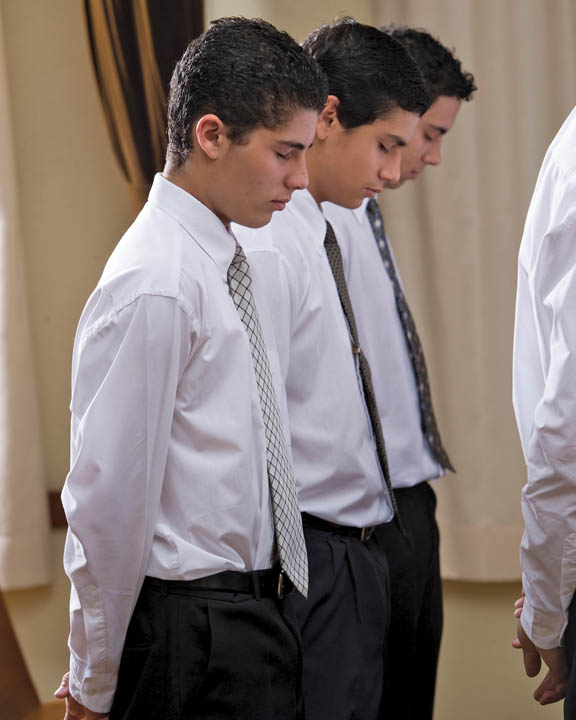 Teenage boys are introduced at a young age to leadership and service. At the age of twelve, they can receive the priesthood. You might remember this is the age Jesus was found preaching in the temple one day.
Teenage boys are introduced at a young age to leadership and service. At the age of twelve, they can receive the priesthood. You might remember this is the age Jesus was found preaching in the temple one day.
The priesthood received by these young boys is called the Aaronic Priesthood. This priesthood is often known as the preparatory priesthood, preparing young men or new converts to receive the higher priesthood. At the age of twelve, young boys pass the sacrament of bread and water to the congregation during services (often known as communion in many churches.) They also serve church leaders in various ways and hold the office of “deacon.”
At fourteen, they can become, if worthy, “Teachers.” In the priesthood sense, this does not mean teaching a class. They prepare the bread and water mentioned above for the service. They can also serve as home teachers with an adult companion, often the boy’s father. A home teacher visits a regular list of families monthly or more often to teach a brief gospel message and to make sure the family is well and not in need of help. When a family needs assistance, it is frequently the home teacher to whom they turn first. The home teacher either provides the service or arranges for someone else to do it.
At sixteen, they can be “Priests.” This is not the equivalent of a Catholic priest. It is another level of service within the Aaronic Priesthood. Now they can actually bless (pray over) the sacrament of bread and water. They can also ordain others to levels of priesthood they themselves have held and can perform baptisms.
Young men are taught that priesthood isn’t something they have only at church. It goes with them every moment. This means they have a responsibility to positively represent the Church and to uphold its moral standards every moment of their lives. They are taught to treat women with respect and to honor their parents and leaders as part of their priesthood duty.
The young men, as they’re called, usually belong to the Boy Scouts of America. This helps them stay very busy doing worthwhile projects and having experiences that help them grow into responsible adults.
They are encouraged to do well in school and go on to college, so they can effectively serve a mission when they are nineteen. This lasts for two years, after which most go on to finish school and marry.
While teenagers certainly have fun, they are taught that the teen years for both boys and girls are meant as a time to prepare for adulthood. Acting under the guidance of wise fathers, leaders, and mentors, the boys learn what will be involved in quality adulthood. They prepare to become husbands, fathers, citizens, and church leaders.
They have multiple adult leaders in their church programs. These adult men serve as role models of men who treat their wives with respect and are involved with their children. The boys often see their leaders teaching a class while cradling a baby in their arms, or watch as a father comforts a crying child. This quiet modeling prepares the boys to become active, nurturing fathers, and loyal, loving husbands in the future.
Amidst the fun of the teen years, LDS boys are learning to be men.
